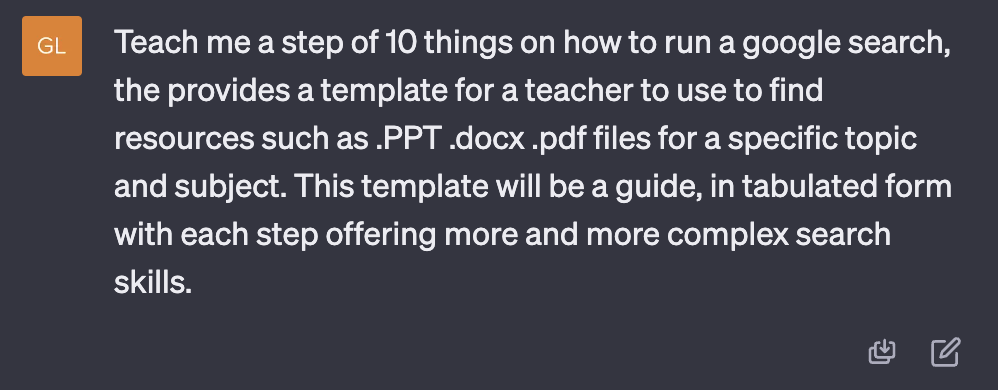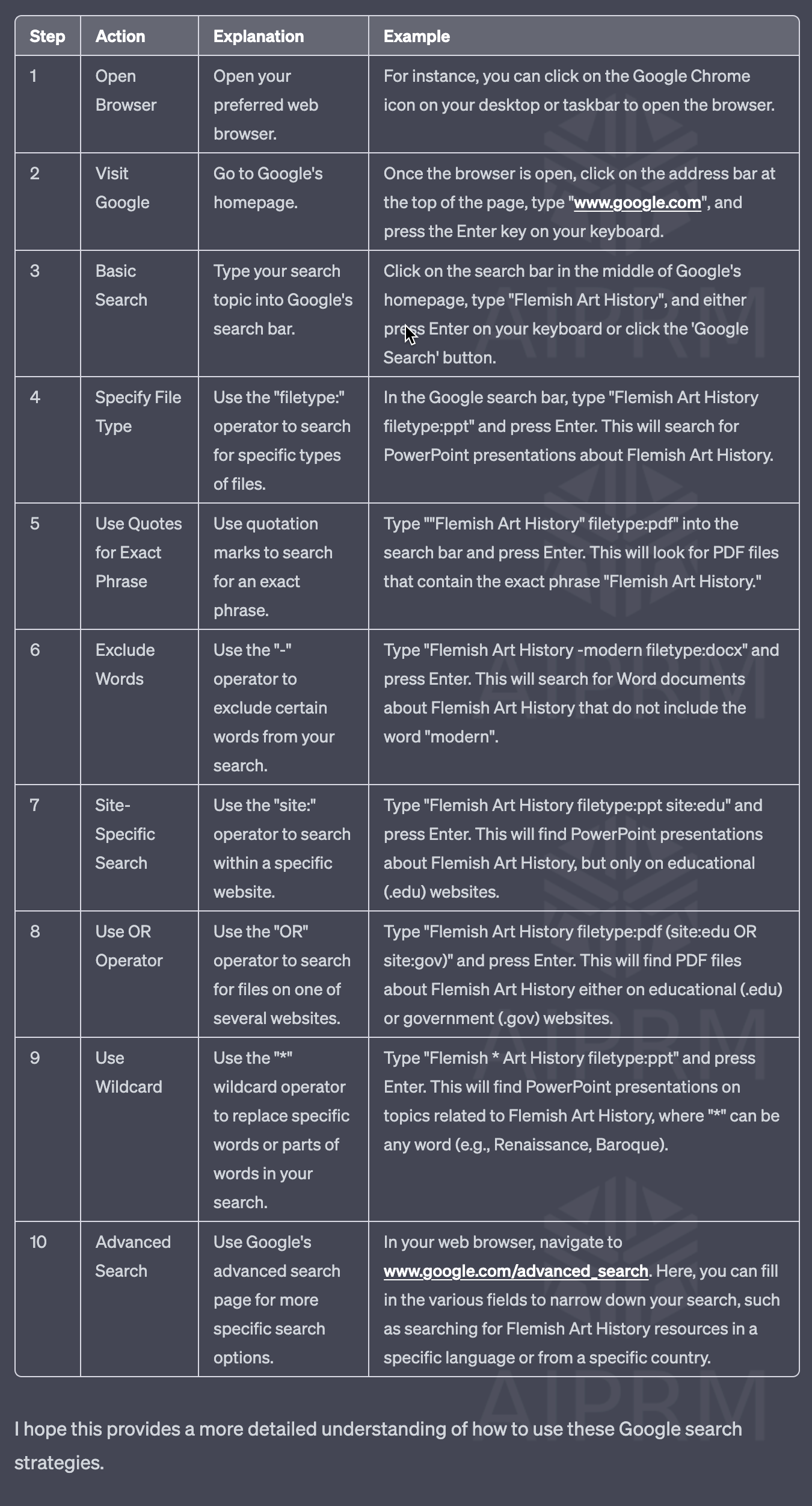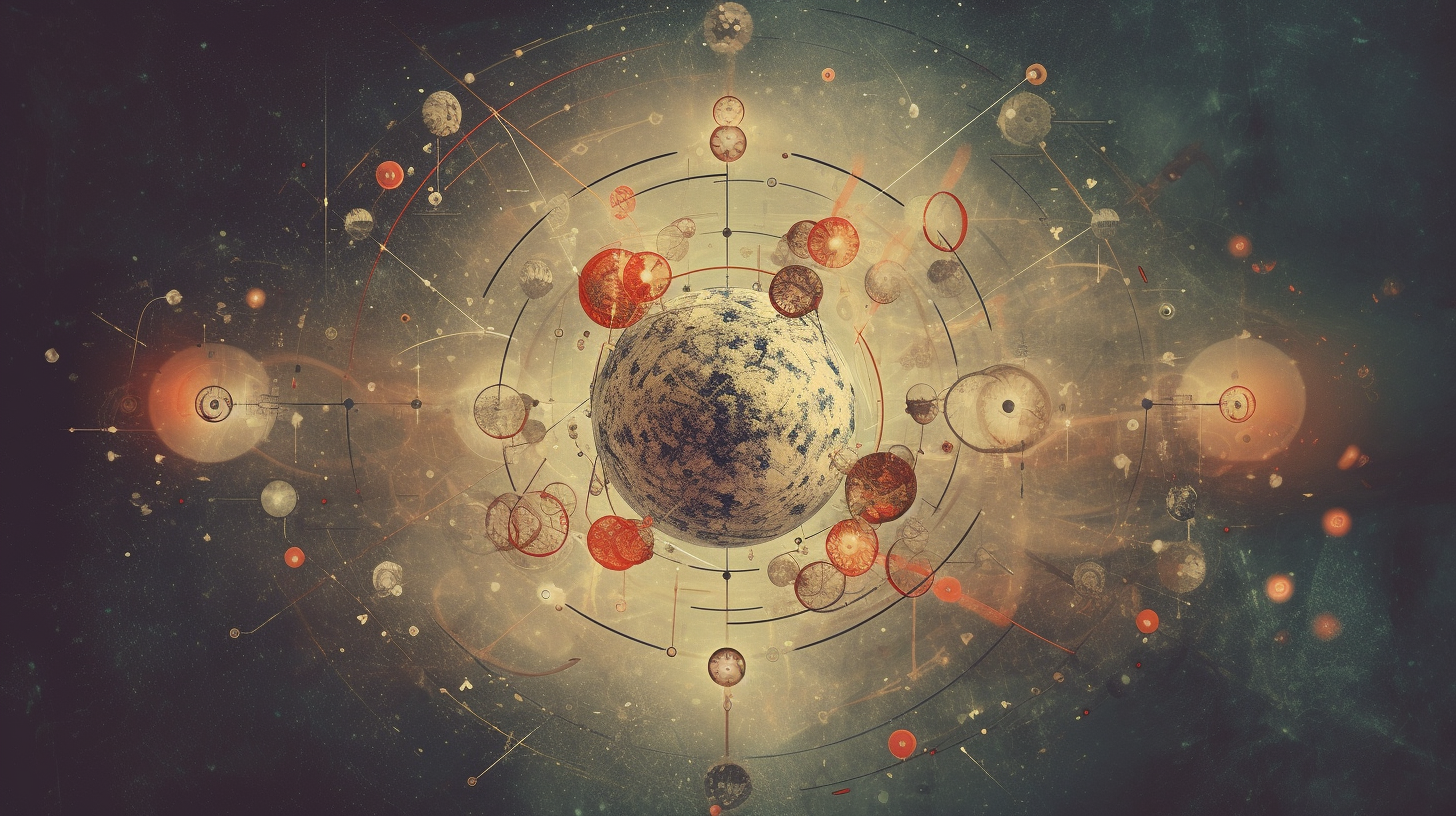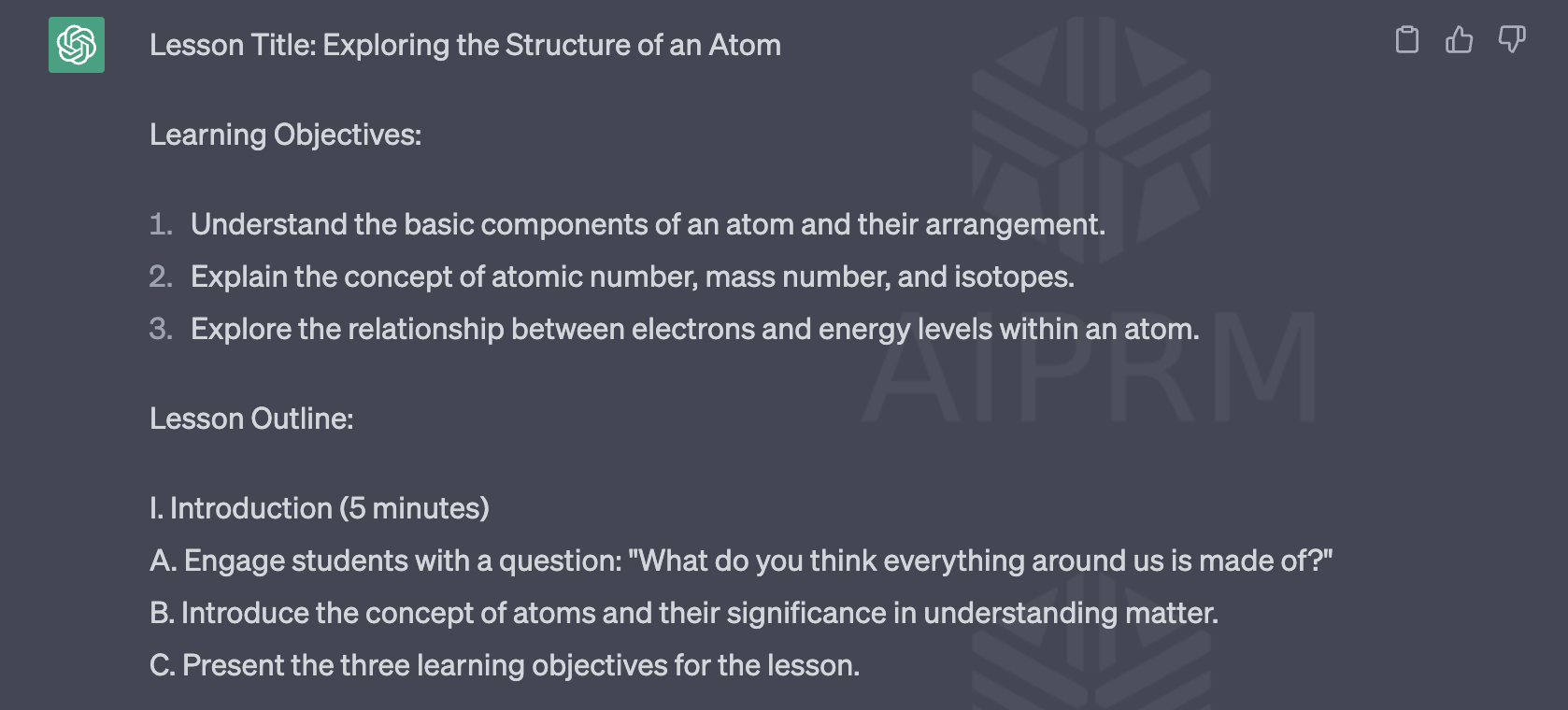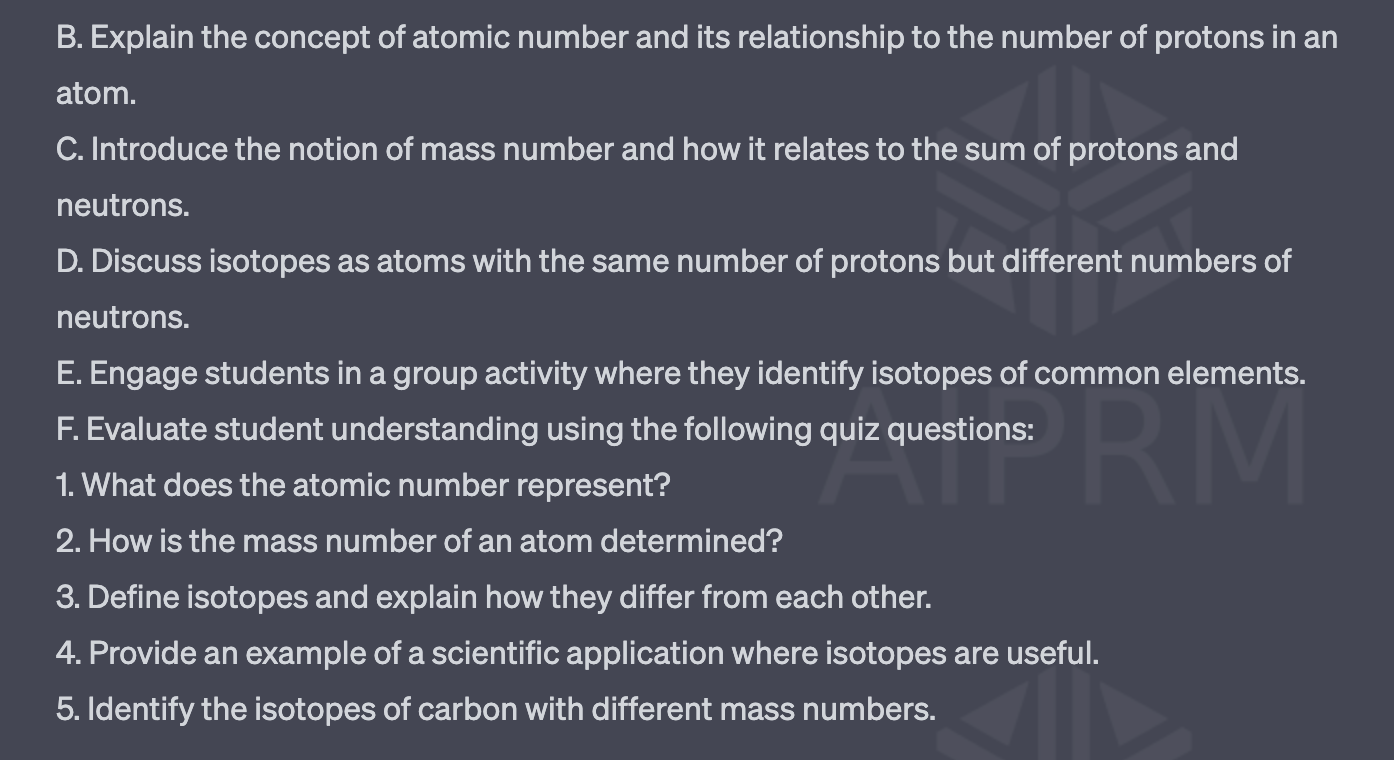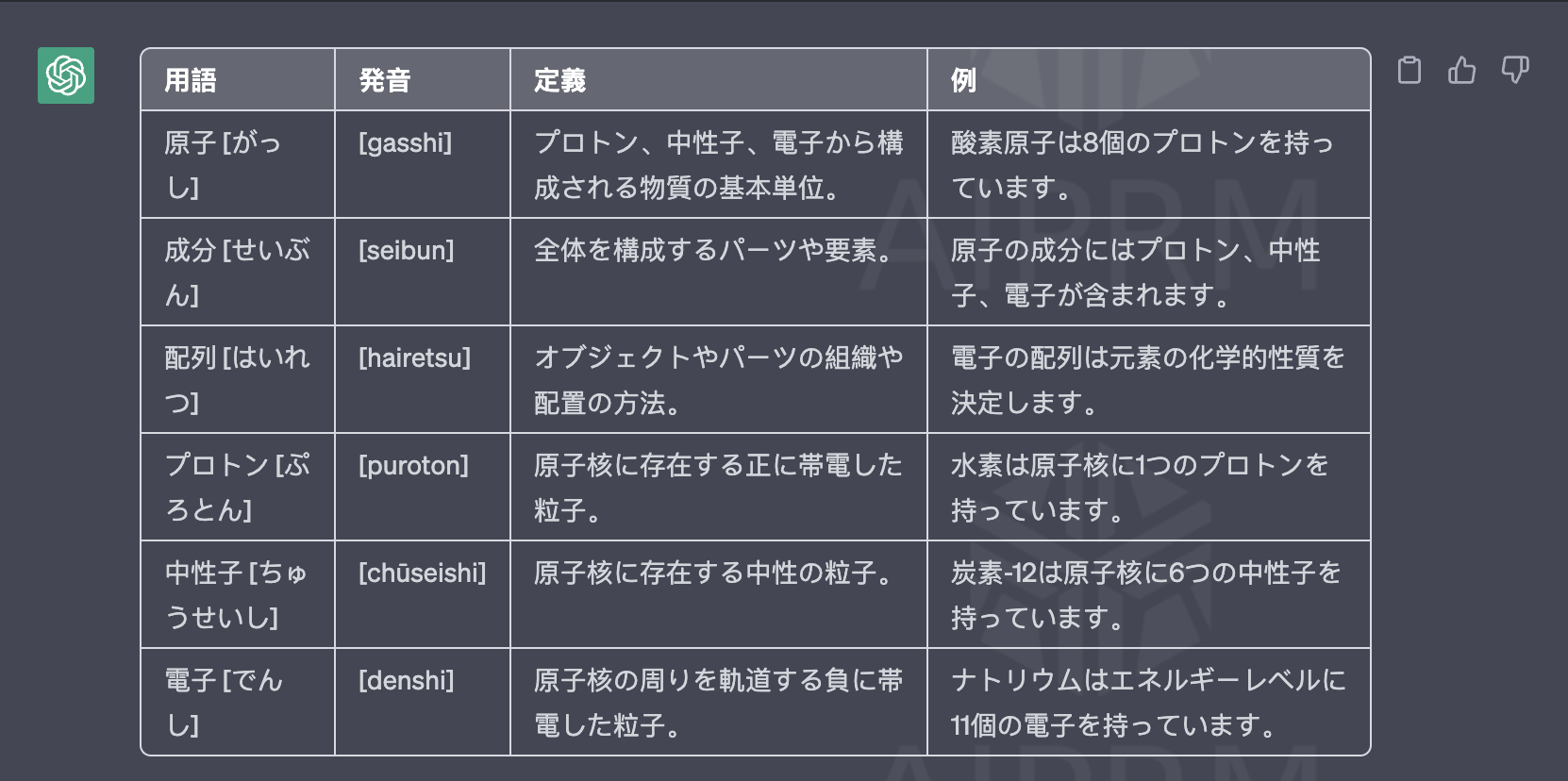Hello, and welcome. This is the blog post to accompany the majority of my presentation at 21CL BKK.
This is the presentation I’ll be using. All the other materials that I will be using will be in this post.
Items not in the presentation:
How to learn to Google search like a pro. The basics with ChatGPT.
This is a basic move for the simple reason that we are asking it a lot of what it can do on the web with a 2021 knowledge base.
There are numerous PDFs about that do this. The difference here is that we are using it to teach us something simple and useful. For example, if we are searching for Greek recipes, how many of us would search beyond the top 10 pages and therefore beyond the likes of Gordon Ramsay, or God forbid, Jamie Oliver (Uncle Roger would have a few words to say about that!). What about the sites that are in .gr top level domain? With Chat GPT we can speek Greek, remember.
Here’s table of the results.
Let’s take this a bit further to get a template. Let’s ask for specific examples to learn from, as we can with any topic: maths, english, engineering, philosophy…
Now that section in part 7 would help with the Greek recipes. Now, all I need is middle eastern flatbread. I wonder what ChatGPT can recommend on how to cook it….
Lesson plans, assessment and resourcing. How can you go with letting GPT take the reins? Do we go all in? The whole nine yards? Let’s go…
Asking the Right Questions, Asking Better Questions.
There’s a website (or many) that uses GPT as a template maker for asking questions, the fact that we are already doing this in our everyday practice, makes this a neat next step to the title": AI isn’t taking my job, only making it better for my students ( and us, at the same time).
This set of steps takes us on the basic journey from GPT as a giver of information to a maker of information that is already there. GPT mixes this up and creates a set of stages for us whether this is part of a longer set of lessons or project.
Let’s take the subject of Atomic Theory. This is a huge topic for anyone, let alone 9 year old children. How can we break this down into manageble chunks, ask questions, make a discussiuon, find a video, transcribe this and talk about it all with a sequence of understanding for all? Including your Japanese EAL student, who reads but cannot converse in English well, let alone about Atomic theory! Remember, make better questions, not us asking better questions.
Here goes.
Make a lesson about atomic theory and ask in plain and simple language.
With a quiz of 20 questions that link to a the 3 learning objectives.
The objectives must have 5 essential questions for the children to think about.
The 5 questions must rank in order of complexity.
Create a lesson outline, with quiz as above, for 10 year old children learning about the structure of an atom.
Lesson Outline with objectives and ranking order of questions. These get complex, but this suits our school as we have a heavy atomic theory angle throughout the school from Year 1 upwards.
Stages of the outline. Now, this could be ANYTHING. How to use evasion game techniques with a junior level capture-the-flag type game in P.E. lessons- give me 5 questions to ask my students. How can we investigate the bend qualities of different types of wood when steaming to bend in furniture making- give me 5 questions for my students to ask their teams as part of their design process. ANYTHING!
Next, Make a Quiz. Now this can easily be set as part of a code snippet in any language, should you prefer. Say, Python. JavaScript
Quiz: Exploring the Structure of an Atom
Objective 1: Basic Components and Arrangement
What are the three main components of an atom? a) Protons, electrons, and photons b) Protons, neutrons, and electrons c) Electrons, isotopes, and valence electrons d) Neutrons, isotopes, and photons
Where are protons and neutrons located within an atom? a) In the electron cloud b) Orbiting the nucleus c) In the energy levels d) Inside the nucleus
True or False: The overall charge of an atom is always zero. a) True b) False
How does the arrangement of subatomic particles affect the properties of an element? a) It determines the atomic number b) It determines the mass number c) It determines the chemical reactivity d) It determines the color of the element
Which element would likely have a larger atomic size: helium or potassium? a) Helium b) Potassium c) Both have the same atomic size d) It depends on the number of neutrons
Now, should you want the code to make the pages interactive, then this is possible too.
<!DOCTYPE html>
<html>
<head>
<title>Atom Structure Quiz</title>
<style>
body {
font-family: Arial, sans-serif;
}
h1 {
text-align: center;
}
.question {
margin-bottom: 10px;
}
.submit-btn {
text-align: center;
}
</style>
</head>
<body>
<h1>Atom Structure Quiz</h1>
<form id="quiz-form">
<div class="question">
<p>1. What are the three main components of an atom?</p>
<label><input type="radio" name="q1" value="a"> a) Protons, electrons, and photons</label><br>
<label><input type="radio" name="q1" value="b"> b) Protons, neutrons, and electrons</label><br>
<label><input type="radio" name="q1" value="c"> c) Electrons, isotopes, and valence electrons</label><br>
<label><input type="radio" name="q1" value="d"> d) Neutrons, isotopes, and photons</label>
</div>
<!-- Rest of the questions with similar structure -->
<div class="submit-btn">
<button type="submit">Submit</button>
</div>
</form>
<script src="script.js"></script>
</body>
</html>
Together with the JavaScript
document.getElementById('quiz-form').addEventListener('submit', function(e) {
e.preventDefault();
// Calculate the score
const score = calculateScore();
// Display the score
alert('Your score: ' + score + '/10');
// Send score via email
const emailBody = 'My score on the Atom Structure Quiz: ' + score + '/10';
const emailSubject = 'Atom Structure Quiz Score';
const mailtoLink = 'mailto:example@example.com?subject=' + encodeURIComponent(emailSubject) + '&body=' + encodeURIComponent(emailBody);
window.location.href = mailtoLink;
});
function calculateScore() {
const questions = document.querySelectorAll('.question');
let score = 0;
questions.forEach(function(question) {
const selectedAnswer = question.querySelector('input[type="radio"]:checked');
if (selectedAnswer && selectedAnswer.value === 'b')
});
return score;
}
Vocabulary List:
Atom [ˈætəm] (noun): The basic unit of matter consisting of protons, neutrons, and electrons. Example: An oxygen atom has 8 protons.
Components [kəmˈpoʊnənts] (noun): Parts or elements that make up a whole. Example: The components of an atom include protons, neutrons, and electrons.
Arrangement [əˈreɪndʒmənt] (noun): The way in which objects or parts are organized or positioned. Example: The arrangement of electrons determines the chemical properties of an element.
Protons [ˈproʊtɑnz] (noun): Positively charged particles found in the nucleus of an atom. Example: Hydrogen has one proton in its nucleus.
Neutrons [ˈnjuːtrɑnz] (noun): Neutral particles found in the nucleus of an atom. Example: Carbon-12 has 6 neutrons in its nucleus.
Electrons [ɪˈlɛktrɑnz] (noun): Negatively charged particles that orbit the nucleus of an atom. Example: Sodium has 11 electrons in its energy levels.
Easily translated into Japanese:
As a teacher, we will need this tabulated and part of a longer project or plan. So, ask for it and make it suit your school and lesson structure.
And a tabulated form of the planning.
Now for that video
You need the text from the video. This is always great. So let’s clean it up. It’s in Portguese, so let’s take it as is, and give GPT some context.
Ok, so letting it know the context, this is what we have after a second go and shifting the transcript in YouTube to English Auto-generated.
This is the beginning of the script…
Now leads us into the main thrust of our presentation on using ChatGPT to become both a better assessor of us as teachers and become our guide based on personas. We can also get generative art products to give us a better visual classroom too. Let’s take a look at the next post.
